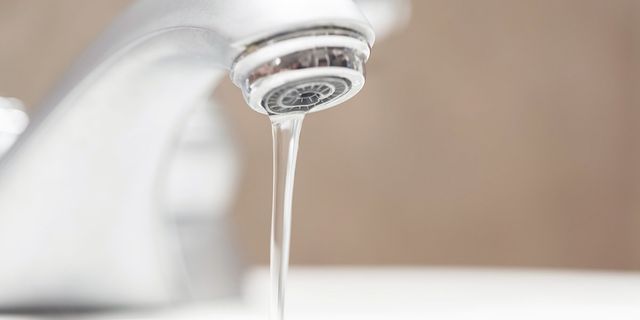Ways to Fix Low Water Pressure in Your Home
Ways to Fix Low Water Pressure in Your Home
Blog Article
This great article underneath about Dealing with Low Water Pressure in Your Home is indeed enjoyable. Don't miss out on it.

Low tide stress in your home can be an irritating trouble, impacting everything from bathing to washing recipes. If you're experiencing weak water flow, there are several possible causes and services to discover. In this overview, we'll discuss typical reasons for low water pressure and functional steps to attend to the issue efficiently.
Introduction to Low Tide Pressure
Low tide pressure takes place when the flow of water from your faucets, showers, and other fixtures is weak than usual. This can make everyday tasks more difficult and much less effective. Recognizing the reasons for low tide pressure is critical to discovering the appropriate remedy.
Usual Root Causes Of Low Water Stress
Pipe Obstructions
Gradually, pipelines can come to be obstructed with natural resource, debris, or particles, restricting the circulation of water. This is a common problem in older homes with galvanized steel pipelines.
Corrosion
Deterioration within pipelines can lead to leaks and reduced water pressure. Rust build-up can restrict water flow, especially in maturing plumbing systems.
Faulty Stress Regulatory Authorities
Stress regulators are in charge of preserving regular water pressure in your home. If they malfunction, it can lead to low water pressure or unequal flow throughout your house.
Metropolitan Water Supply Issues
Occasionally, the trouble exists outside your home. Local supply of water concerns, such as main line leakages or maintenance work, can briefly decrease water stress in your area.
How to Identify Low Tide Stress
Examining Taps and Fixtures
Beginning by testing the water stress at different taps and components throughout your home. If the concern is isolated to particular locations, it might indicate local problems.
Checking Pipes
Inspect noticeable pipes for indications of leaks, deterioration, or obstructions. Focus on any type of uncommon noises, such as knocking or rattling pipes, which could indicate concerns within the plumbing system.
Consulting with a Plumber
If you're incapable to determine the cause of low water pressure, think about working with a professional plumber to conduct an extensive examination. They can identify underlying issues and advise proper services.
Do It Yourself Solutions to Deal With Low Water Pressure
Cleaning Up Aerators and Showerheads
Natural resources can accumulate in aerators and showerheads, reducing water flow. Get rid of and clean up these elements frequently to boost water stress.
Flushing Hot Water Heater
Sediment build-up in the hot water heater can limit circulation and minimize efficiency. Purging the storage tank regularly helps get rid of debris and keep optimum performance.
Inspecting Stress Regulator
Ensure that the pressure regulatory authority is operating appropriately. Changing or replacing the regulatory authority can assist bring back correct water pressure throughout your home.
Clearing Up Clogs in Piping
For minor blockages, try utilizing a plumbing snake or chemical drain cleaner to clear obstructions in pipelines. Beware when using chemicals and adhere to safety and security guidelines.
When to Call a Specialist Plumber
If do it yourself initiatives fall short to solve the issue or if you believe significant plumbing issues, it's finest to look for help from an accredited plumber. They have the proficiency and tools to attend to intricate issues securely and successfully.
Safety Nets to Keep Water Pressure
Regular Maintenance
Set up routine upkeep for your plumbing system to stop concerns such as corrosion, leakages, and clogs. Attending to minor problems early can help avoid more considerable repairs later on.
Setting Up a Pressure Booster
Consider setting up a stress booster pump to enhance water stress in locations with regularly low flow. This can be specifically helpful for multi-story homes or homes with high-demand components.
Surveillance Water Use
Be mindful of water usage routines and prevent overtaxing the plumbing system. Straightforward adjustments, such as staggering showers and washing loads, can aid preserve adequate water pressure.
Conclusion
Managing low tide pressure can be discouraging, yet recognizing the underlying reasons and executing ideal remedies can recover optimal flow throughout your home. Whether it's cleansing aerators, evaluating pipes, or seeking advice from a plumber, taking proactive actions can make sure a stable supply of water for your everyday requirements.
FOUR WAYS TO FIX LOW WATER PRESSURE NOW
Turning on a shower or faucet only to find the water comes out in a sad, slow drizzle is never a good feeling. How exactly are you supposed to wash a pan or take a quick shower when it takes 10 minutes just to rinse off a little soap? The good news is that when your water pressure is bad, there's always a cause: typically one that can be easily fixed. Here are some of the most common causes of low pressure and what you can do to fix the issue:
DEBRIS AND MINERAL DEPOSIT BUILDUPS
If you notice low water pressure from just one or two of the fixtures in your house, the problem likely has to do with debris buildup. Water is full of minerals and other debris, all of which can accumulate in your pipes and on your fixtures. This can cause a blockage that affects how much water flows through. To fix this, try filling a small plastic bag with white vinegar, and use a rubber band to hang it around your showerhead or faucet. Let the head of the fixture soak for a few hours, and the vinegar should loosen the deposits.
WATER LEAKS
Leaks are another common cause of low water pressure. If water is flowing out of your plumbing through a hole or crack before it can reach your fixture, the pressure coming out of the faucet or showerhead will be lower. A plumbing professional is your best bet for finding and repairing a leak in your water supply pipes.
Leaks are another common cause of low water pressure. If water is flowing out of your plumbing through a hole or crack before it can reach your fixture, the pressure coming out of the faucet or showerhead will be lower. A plumbing professional is your best bet for finding and repairing a leak in your water supply pipes.
FOUR WAYS TO FIX LOW WATER PRESSURE NOW
Turning on a shower or faucet only to find the water comes out in a sad, slow drizzle is never a good feeling. How exactly are you supposed to wash a pan or take a quick shower when it takes 10 minutes just to rinse off a little soap? The good news is that when your water pressure is bad, there's always a cause: typically one that can be easily fixed. Here are some of the most common causes of low pressure and what you can do to fix the issue:
DEBRIS AND MINERAL DEPOSIT BUILDUPS
If you notice low water pressure from just one or two of the fixtures in your house, the problem likely has to do with debris buildup. Water is full of minerals and other debris, all of which can accumulate in your pipes and on your fixtures. This can cause a blockage that affects how much water flows through. To fix this, try filling a small plastic bag with white vinegar, and use a rubber band to hang it around your showerhead or faucet. Let the head of the fixture soak for a few hours, and the vinegar should loosen the deposits.
WATER LEAKS
Leaks are another common cause of low water pressure. If water is flowing out of your plumbing through a hole or crack before it can reach your fixture, the pressure coming out of the faucet or showerhead will be lower. A plumbing professional is your best bet for finding and repairing a leak in your water supply pipes.
Leaks are another common cause of low water pressure. If water is flowing out of your plumbing through a hole or crack before it can reach your fixture, the pressure coming out of the faucet or showerhead will be lower. A plumbing professional is your best bet for finding and repairing a leak in your water supply pipes.
A VALVE ISSUE
If you have low water pressure throughout your home, check your main shut-off valve to make sure it's completely open. You may also want to see if there's a pressure-reducing valve installed. If there is, have a plumber help you adjust the settings to get the pressure you're looking for.
OTHERS USING WATER
Believe it or not, your low water pressure could be caused by your neighbors. If you notice low pressure at certain times of day, it may be because you and the people living next to you have similar schedules - when everyone is showering at the same time, the pressure will be lower in every home. Low pressure throughout the neighborhood may also be caused by an issue with your municipal water supply. If that's the case, call the supplier to see if they're working on the issue.
https://www.rotorooter.com/blog/water-leaking/low-water-pressure-fixes/

Do you like reading about 4 Ways to Troubleshoot Low Water Pressure? Write a remark down the page. We will be happy to hear your responses about this blog post. Hoping that you come back again in the near future. Sharing is good. You never know, you may very well be helping someone out. Thank you for taking the time to read it.
Book 24/7 Report this page